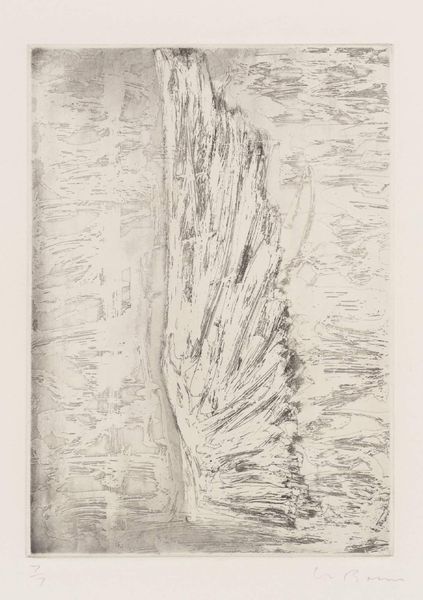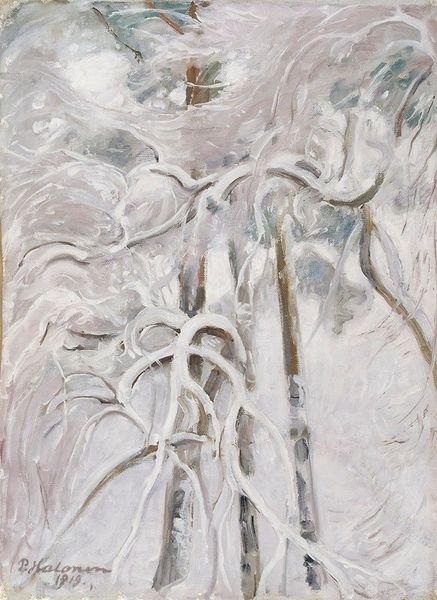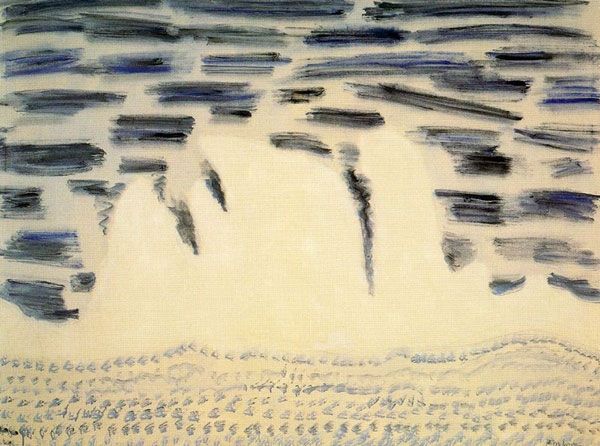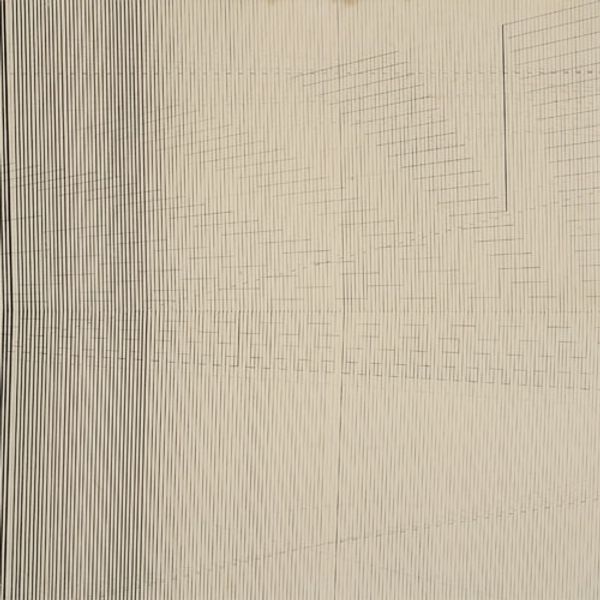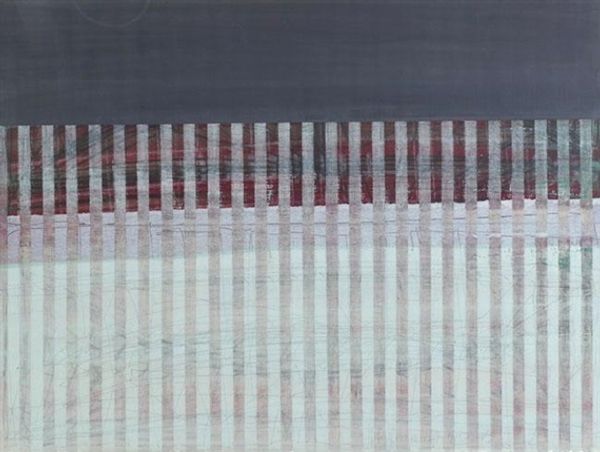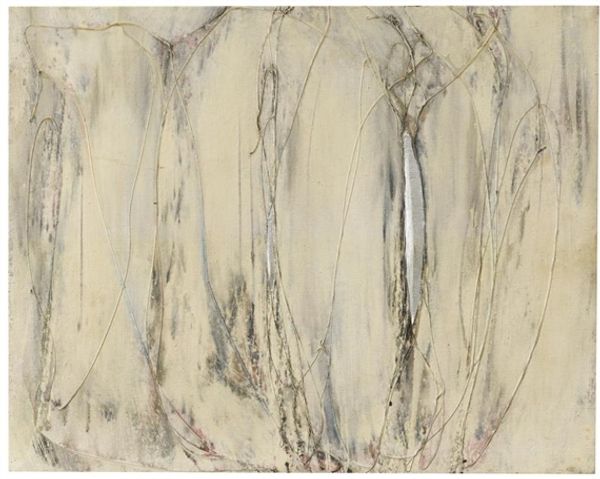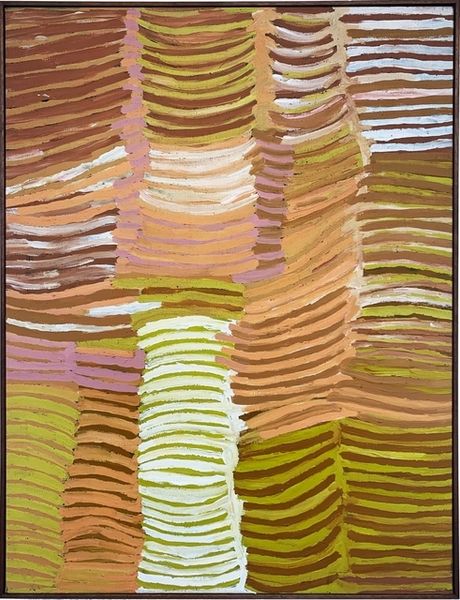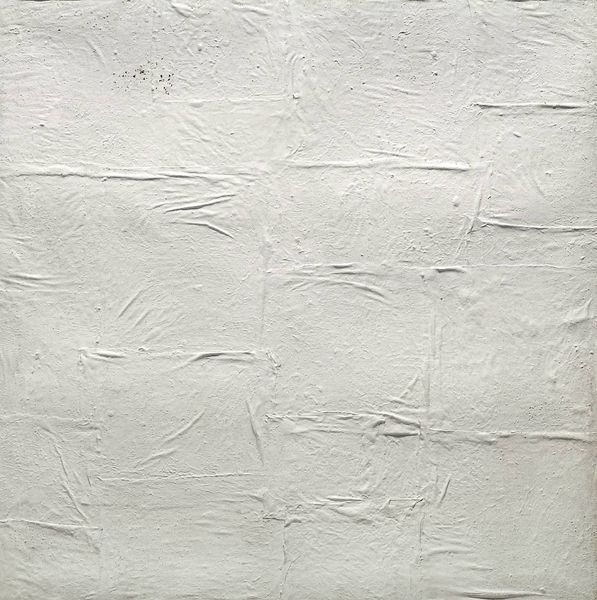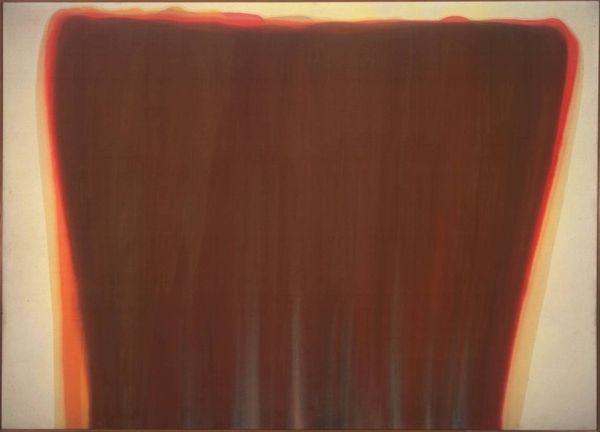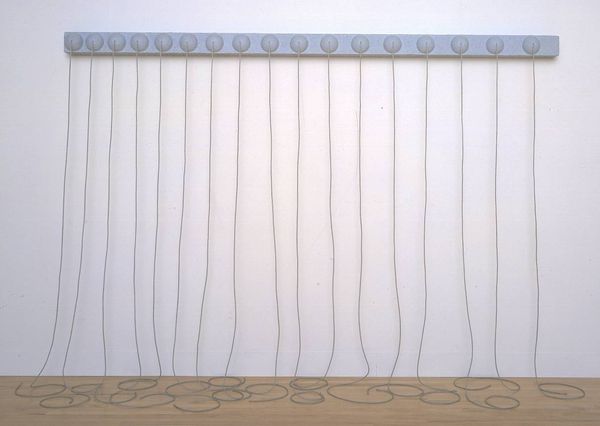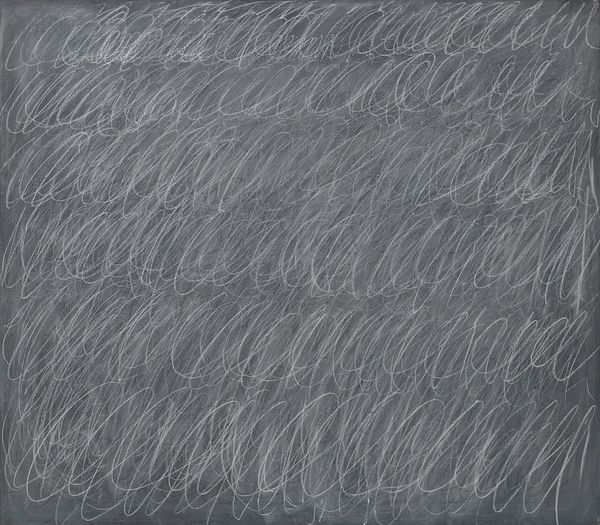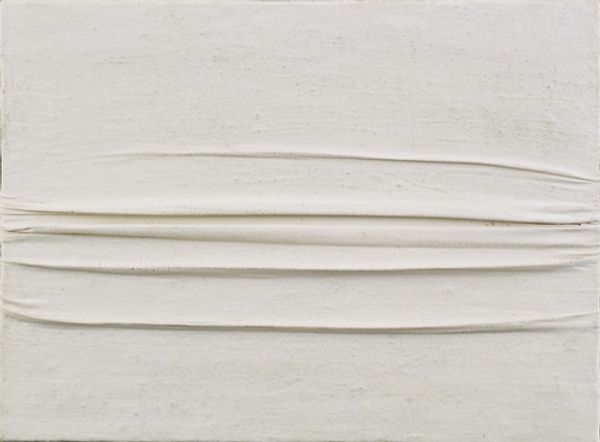
oil-paint, impasto
#
arte-povera
#
oil-paint
#
postminimalism
#
impasto
#
neo-dada
#
matter-painting
#
abstraction
#
line
#
monochrome
Copyright: Piero Manzoni,Fair Use
Editor: So here we have Piero Manzoni’s *Achrome* from 1958, made using oil paint and impasto. The heavy texture and monochromatic palette create such a unique…presence, I guess you could say. It looks almost like a landscape, but utterly bleached and barren. How do you interpret this work? Curator: I see this work as a powerful statement about the possibilities and limitations of artistic representation itself, produced in postwar Europe where social and political trauma permeated all aspects of culture. Think about the title *Achrome*, literally “without color.” Manzoni is rejecting traditional artistic conventions by creating a seemingly blank canvas. He pushes us to confront the very essence of art. Editor: That’s a strong reading. Does it have anything to do with social context and material? Curator: Absolutely. The *Achrome* series emerged in the context of Arte Povera. What materials are used and the context of such is crucial to consider, as is its relationship to contemporary theory that exposes that materiality can never be separate from identity, gender, race, and politics. I mean, he chose common, inexpensive materials and techniques to deliberately undermine the idea of the artist as a master. Consider the social implications: is the monochrome white neutral, or is it in itself loaded as a color with centuries of cultural interpretation? Editor: Wow, I never thought about it that way! So it’s not just about what is absent from the work, but the very charged context of that absence? Curator: Precisely. How does Manzoni make us rethink what we already thought we knew about abstraction, materiality, and, ultimately, the function of art within a rapidly changing society? What power dynamics might be at play? Editor: Okay, now I’m seeing it as less of a bleak landscape and more as a critical statement about art and society! Thanks. Curator: Of course! It makes you rethink how our preconceived notions affect how we view it. Art exists within and reflects the world around it.
Comments
No comments
Be the first to comment and join the conversation on the ultimate creative platform.

